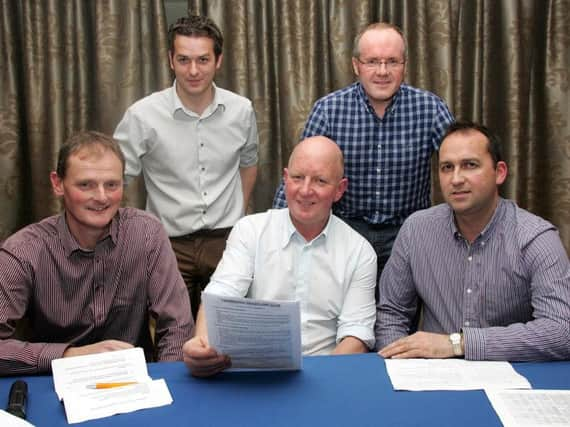New chairman is appointed to Fermanagh Grassland Club


Robert manages a suckler to beef herd with some progeny sold as stores and also has a sheep flock.
Robert was elected at the annual meeting in December succeeding James Murphy, who has completed his year in office.
The new office-bearers were as follows;
Advertisement
Hide AdAdvertisement
Hide AdChairman - Robert Graham, Tempo; Vice-Chairman - Trevor Dunn; Secretary - William Johnston; Treasurer - Philip Clarke.
Committee members - David Brown, John Egerton, Albert Foster, Ivan Henderson, Barry Read and Alan Warnock.
The speaker at the annual meeting was Lindsey Drummond, a veterinary surgeon, who spoke about using cow signals to get to know about the herd.
Lindsey is a member of the Read family from Maguiresbridge, and is now in practice in Northern Ireland after training at the Royal Dick Veterinary School, Scotland and after spending some time abroad. Lindsey became a qualified cow signal master in 2014.
Advertisement
Hide AdAdvertisement
Hide AdHer message to farmers attending the meeting was; “Take a step back” from normal routine and see if there is anything to change to improve the herd management.
Lindsey reported from countries where she had spent some time, such as New Zealand, as well as Columbia in South America and Sweden where she saw a wide range of management skills. She said it was from some of these trips that made her think about the relationships between farmers and vets.
She said happy cows were healthy cows, helping to improve farm performance and ultimately leading to happy farmers.
The principle, she said, was that farmers used their senses, what they noticed.
Advertisement
Hide AdAdvertisement
Hide AdThree members of Fermanagh Grassland Club also addressed an earlier meeting.
The farmers representing the beef sector and agricultural contracting told their story to members.
David Brown, a suckler to beef farmer from Florencecourt, manages 65 Simmental/Limousin cross cows with the progeny sold as beef or strong stores.
AI is used to breed replacements and a Charolais stock bull on the remainder of the breeding herd.
Advertisement
Hide AdAdvertisement
Hide AdDavid operates a split calving system with two-thirds calving in the Spring and the other third in the autumn confining calving to a six-week period.
He has improved grassland through drainage and improved accessibility by installing new laneways and fitting additional drinkers.
Another suckler farmer, Ivan Henderson, a qualified veterinary surgeon, returned to the family’s home farm near Lisnaskea in 2002 where he stocks 100 crossbred cows on 82 hectares.
Progeny include Charolais, Simmental and Aberdeen Angus, the latter finished for the Foyle Group, the Charolais and Simmental steers sold as stores and the Simmentals/AA females kept for replacements. It has been a closed herd for some time.
Advertisement
Hide AdAdvertisement
Hide AdThere are four batches for calving, end of February into March, May/June, August/September and November/December to suit farm management.
Animal health is an important factor on the Henderson farm with a number of vaccinations and dosing treatments used.
The third speaker, Barry Read, an agricultural contractor, outlined the development of his business which has grown significantly. He now runs a fleet of seven Valtra tractors, a self propelled forage harvester and a combine.
He changed the slurry tanker fleet replacing four smaller machines with two of 4000 and 4500 gallons capacity.
He said bigger machines resulted in economy of scale and less time hauling, leaving more time to work, less labour requirement and faster completion rates.